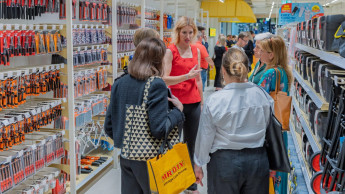

deep insights, facts & figures

The influence of developments in the economy on DIY retailing in Central and South-eastern Europe
The crises experienced in recent years have hit the region of Central and South-eastern Europe hard. After the bursting of the property bubble in 2008 came financial and economic crises, and finally the international crisis of sovereign states. The IMF and the EU intervened in a supportive role in 2010, though the conditions they set were tough. They forced the countries affected to undertake drastic measures in order to ensure the consolidation of their national budgets. Some of these measures have had a marked impact on the purchasing power in this region, and so are undermining consumption as a whole. The consequence is that the basic conditions for retailers have developed in very different ways, sometimes not very positively: for instance, last year value-added tax was raised at short notice from 19 to 24 per cent in Romania, while at the same time the pay of civil servants was cut by 25 per cent. The result of all this is a perceptible degree of consumer resistance among the population. A comparative overview of disposable income per household and country demonstrates appreciable differences. Whereas households in Austria have an annual disposable income of € 34 700, the figure is no more than € 11 200 in the Czech Republic and just € 7 000 in Romania.¹ These income levels are reflected in the pattern of consumption as well. While 12 per cent of income is spent on leisure activities in Austria and 7 per cent on house and home, in Romania only 5 and 6 per cent respectively of average income is available for these two areas. ² A similar picture becomes apparent upon consideration of the living space available per inhabitant and country: the average living space per head of population in Austria comes to 50 m², compared with only 17² in Romania, though 30 m² in Turkey and 45 m² in Slovenia. Baumax has set itself the goal of meeting the wants and needs of customers in the individual countries in the best possible way. Customers living under the above-mentioned conditions tend to be very aware of prices. This makes it particularly important to offer the right level of cost effectiveness in order to maintain customers’ confidence in the company’s pricing system. Baumax introduced a permanent low-price concept right from the start of its operations in Romania, Bulgaria and Turkey. Over the last two years Croatia, Slovakia and Hungary have been successfully converted as well. The concept has proved its worth, while the underlying principle is easy to…
Related articles
Read also

 Menü
Menü












 Newsletter
Newsletter